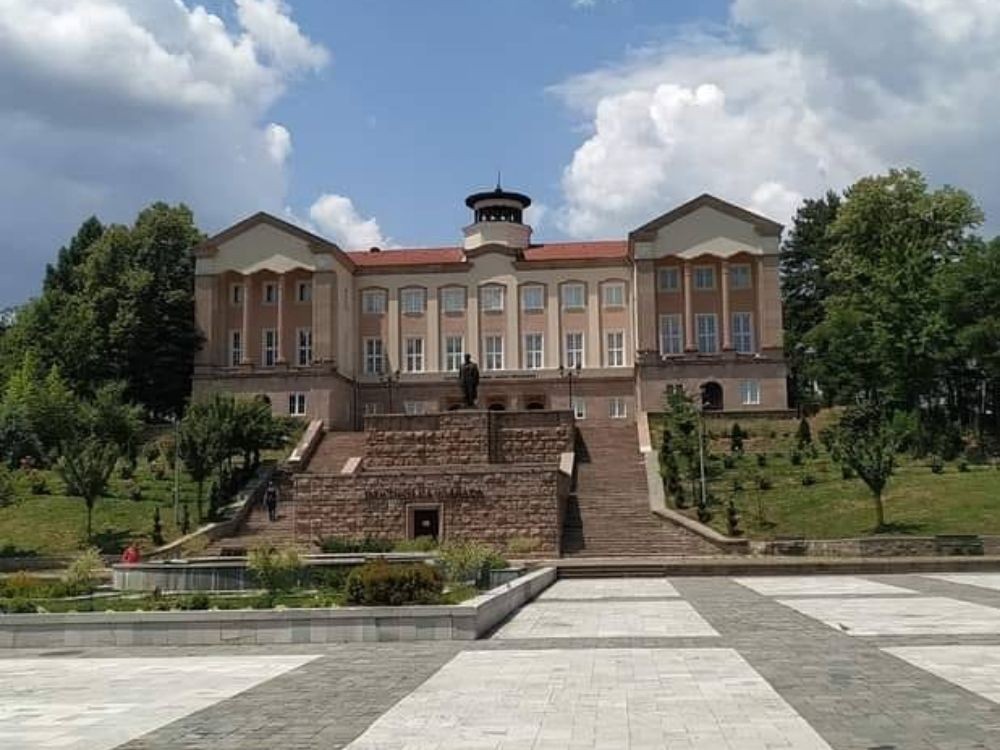The town of Bratsigovo is not among the hot tourist destinations of the day. First-time visitors are amazed by the genuineness of its beautiful houses and conserved Revival atmosphere. The quiet settlement delved in the foot of the Rhodope Mountains is colorful with rose and fruit gardens. It is an ancient land drenched with history. Its soil is rich with artefacts whose dating spans almost all archaeological periods.
20 tombs from the 4th-3rd centuries BC have been discovered only in the region of Ravnogor. In one of them the archaeologists have found the famous Ravnogor treasure. It consists of 9 guilded silver objects for horse ammunition decoration - bridle, pommel and seven round appliqués.

The megaliths near the village of Zhrebichko, which has been declared an architectural reserve, are particularly striking. The Tourist association of Bratsigovo has marked an eco-trail to the megaliths, which stretches along the ridge of the mountain above the "Vucha" dam. The hike takes 6 hours and reveals breathtaking landscapes. The municipality has recently built a special observation deck above the dam which quickly became favorite spot for adventurers and selfie collectors.

Bratsigovo is not just beautiful sights and artefacts. It is historically significant being one of the heroic towns which took part in the April Uprising against the Ottoman rule in 1876.
"The original of legendary cherry cannon from the April Uprising is preserved in the History museum, together with the rebels' flag and the uniform of their leader Vasil Petleshkov (1845-1876)says Maria Pishstalova, an employee of Bratsigovo municipality. Vasil Petleshkov died fighting for the liberation of the town and the surrounding villages. There is monument to his memory on the place where he was killed.
We have a special memorial park "Apriltsi", on the site of the trenches for the defense of the town," Maria Pishtalova says.
But the picturesque town is most famous for its architectural school, which dates back to the times of Ottoman rule. At the time, the locals were renowned as some of the best builders in the empire. "They had a seal of the guild and even spoke a secret language. The vocabulary of this language was recorded in a special book, which is kept in the Museum of the Bratsigovo School of Architecture and Construction in the Popova Kashta (The Priest’s House)," explains Maria Pisthalova.
The Old Town preserves unique historical houses from this era. Among them stands out the monumental building of today's Community Center, which has become an emblem of Bratsigovo.

"Almost all of our landmark temples from the time of Ottoman rule are their work.The builders of Bratsigovo have built the Church of St. Marina in Plovdiv, the churches "St. Nedelya" in Batak and in Sofia, etc. Our craftsmen participated in the reconstruction of the Rila Monastery after most of it burned down in 1833. They have built the most recognizable houses in the old Plovdiv, Karlovo, Kalofer. Interestingly, at first the master builders of Bratsigovo had worked in Dubrovnik and from there, later on, they brought the craft and some peculiarities of the Dubrovnik school of architecture to Bulgaria" - adds Maria Pisthalova.
Locals are proud with the town’s St. John the Baptist Church completed in 1833 by Grand Master Nase Garneto (Athanas-the-Jug). It stands out with its beautiful 28-metre high bell tower - the highest on the Balkan Peninsula, which is equipped with two bells and a clock.
Among the architectural masterpieces of the town is Kanevata Kushta (the House of Kano) from the 18th century, which is home to an ethnographic museum with a rich collection representing the lifestyle, livelihood, clothing and culture of the people of Bratsigovo.
English version: Elizabeth Radkova
Photos: pzdnes.com, Regional History Museum Pazardjik, libraryChairski lakes are a protected area in the Western Rhodopes, known for their naturally formed landslide lakes. They are covered in a thick carpet of peat, surrounded by green meadows and centuries-old spruce forests. The lakes are located 19..
The trips of Bulgarian citizens abroad in August 2024 were 903,400, or 8.3% more in comparison to August 2023, the National Statistical Institute has reported. Trips for the purpose of rest and excursion increased in August by..
Since the beginning of the year, 10.7 million foreigners have visited Bulgaria, Rumen Draganov, director of the Institute for Analyses and Evaluations in Tourism, told BNR. This represents a 5% increase over last year. According to Rumen..

+359 2 9336 661
